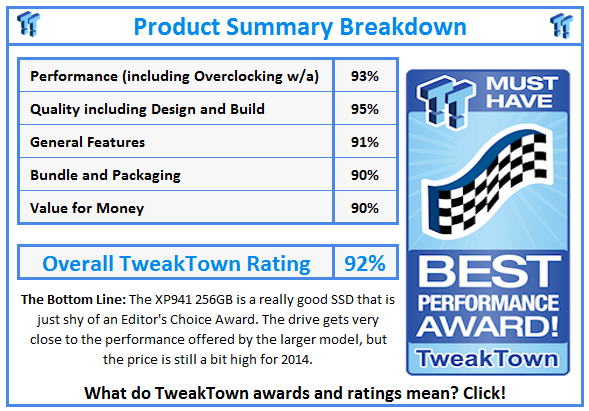Introduction & Specifications, Pricing and Availability
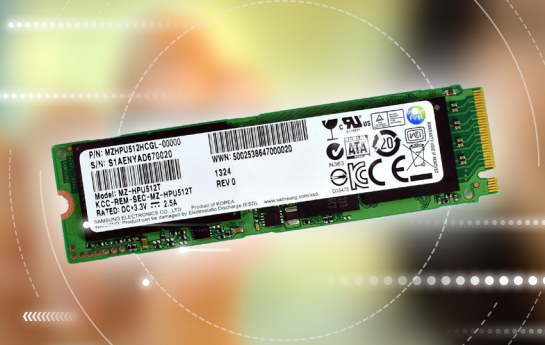
By the time you read this, the initial Intel X99 motherboard and Haswell-E processor reviews should be online. Before X99, a small number of products supported the M.2 interface, and even less support the PCIe x4 option. With X99 that changes, nearly all of the X99 motherboards we've laid eyes on support PCIe x4.
The M.2 form factor supports both SATA and PCIe SSDs, but only PCIe based SSDs take advantage of the extended performance range over SATA III. At this time, there are only two products available on the market that meet both criteria, M.2 and PCIe. Those products are the Plextor M6e, a PCIe 2.0 x2 SSD and the Samsung XP941, a PCIe 2.0 x4 SSD.
The fastest product of the two is the Samsung XP941 and that's the model you want. The Plextor M6e is a nice product and you can buy it with a M.2 to PCIe adapter in the box, but since both cost about the same, your money is better spent on the Samsung drive.
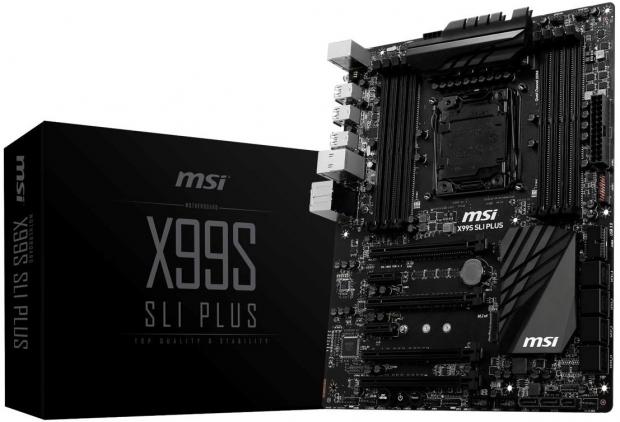
Early on, using the Samsung XP941 required some hoops to jump through to get it to boot. Those issues revolved around using the device on older chipset motherboards that didn't take full advantage of UEFI. Nearly all of the big name motherboard manufacturers have updated BIOS information and it's now possible to get XP941 to boot on most Z87 and Z97 motherboards. X99 should be the first chipset to have zero issues as the norm.
Specifications, Pricing and Availability
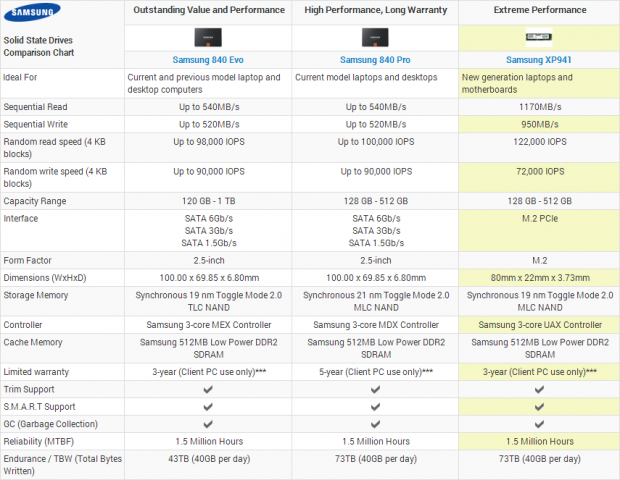
Today, we're looking at the Samsung XP941 256GB, one of three capacity sizes offered by Samsung. We've already tested the 512GB and the 128GB models, all provided to us by RamCity.
The XP941 256GB has a sequential read speed of 1080 MB/s and a sequential write speed of 800 MB/s. This is a significant step up from the performance of the 128GB model, but just a bit shy of the large 512GB XP941 model. Random performance on the XP941 256GB comes out to 120,000 read and 60,000 write.
To get that level of performance, Samsung tapped a new 3-core controller and paired it with Low Power DDR2 DRAM and 19nm Toggle MLC NAND flash. The UAX controller is a PCIe to SATA bridge that operates on PCIe 2.0 in either x2 or x4 mode. To get the most out of your XP941, you need to use an x4 slot, but using an x2 (10Gb/s) slot will only reduce the sequential read by 80 MB/s and have little or no effect on the sequential write speed.
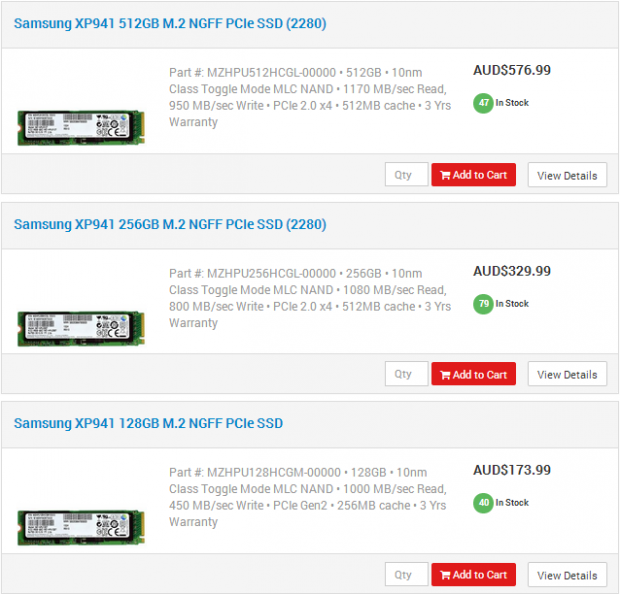
RamCity has all three capacity sizes in stock and ready to ship. Customers outside of Australia don't pay the Australian taxes. Without the tax, the prices come out to $129 (128GB), $249 (256GB) and $488 (512GB). Today, we're looking at the 256GB model at $249. The price falls into my 'less than 300 per component' sweet spot. It's still close to $1 per GB and around $49 more than an 850 Pro 256GB. That said, the XP941 256GB is faster than the 850 Pro, and surpasses the limits of SATA III.
The XP941 products from RamCity ship with a three year warranty.
Samsung XP941 256GB Ultra M.2 PCIe SSD

The XP941 uses the M-Key, the notch on the connector. PCIe x2 and SATA based M.2 drives use the B-Key, a notch on the other side of the connector.

There is not a lot happening on the back side of the XP941 256GB. Most of the power regulation circuits are on this side.
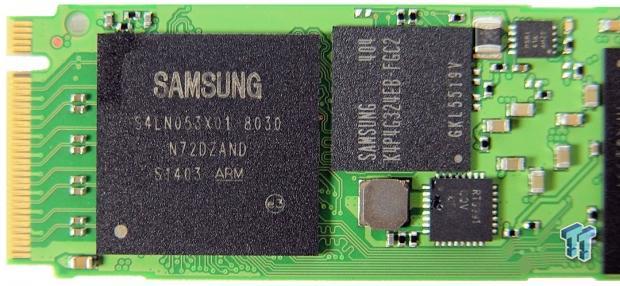
Here we see the Samsung UAX controller and the Samsung LPDDR2 package.
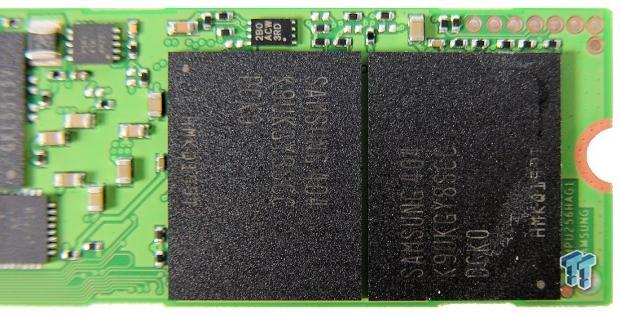
Only two NAND flash packages make up the 256GB capacity size. Each package is 128GB in density.
Test System Setup and ATTO Baseline Performance
Desktop Test System

Lenovo W530 - Mobile Workstation
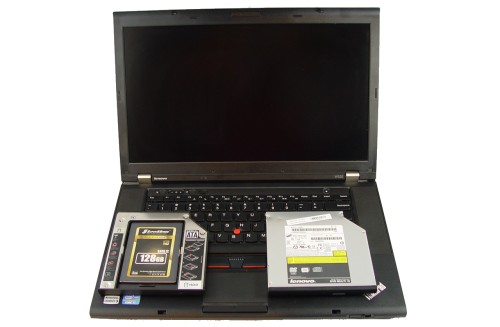
We use two systems for SSD testing. The desktop runs a majority of the tests, and the Lenovo W530 runs the notebook power tests as well as the real-world file transfer benchmark.
ATTO - Baseline Performance
Version and / or Patch Used: 2.34
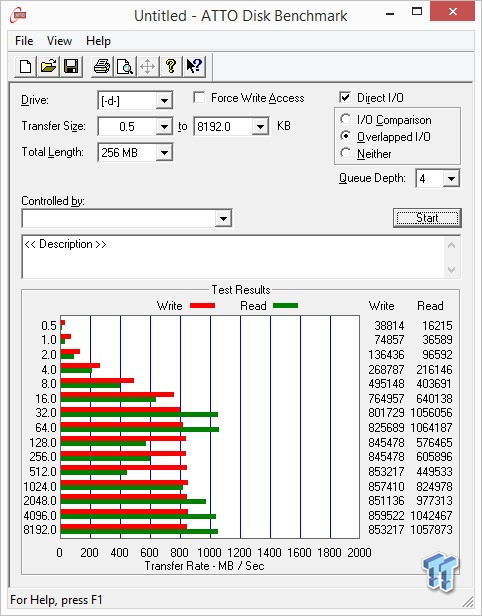
ATTO shows the XP941 256GB could use some optimizations to balance performance, but overall, the performance is high across the board.
The sequential read speed came out at just over 1064 MB/s. That's nearly twice what you can expect from a good SATA III SSD. The sequential write performance is nearly 860 MB/s. Again, well over what's possible with SATA III.
Benchmarks - Sequential Performance
HD Tune Pro - Sequential Performance
Version and / or Patch Used: 4.55
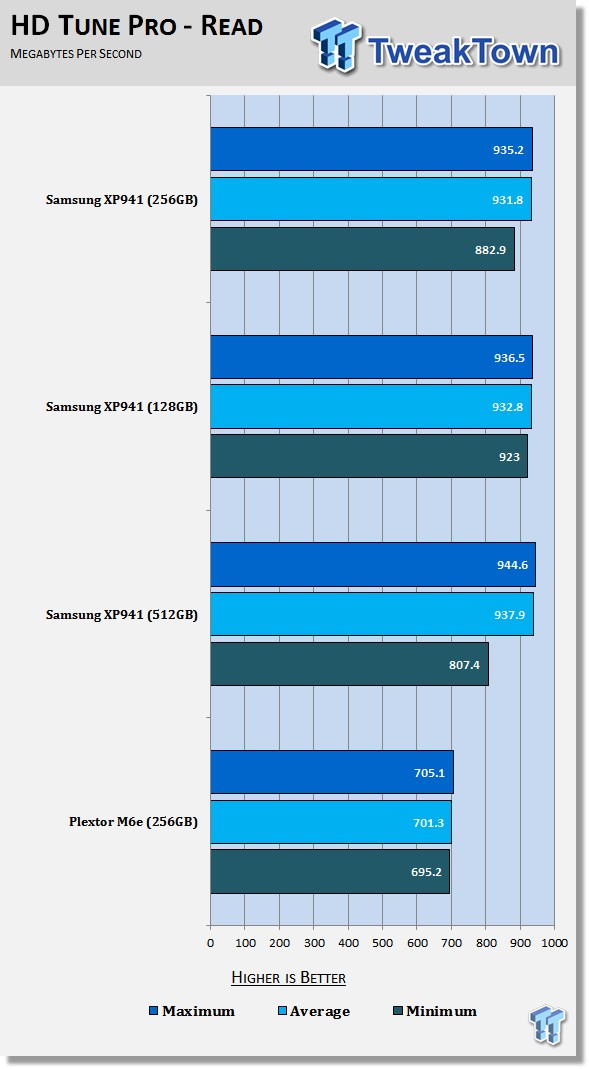
At this time, there are only two products on the market using PCIe based M.2. Later in the year that will change when Marvell releases a PCIe 2.0 x4 controller code named Altaplus, but for now, the Marvell PCIe 2.0 x2 and the Samsung XP941 PCIe 2.0 x4 are the only game in town.
The Samsung XP941 is clearly the performance leader in the PCIe M.2 category, with the 512GB model being the fastest. The 256GB model we're focusing on today isn't much slower, and when it comes to reading data, all three XP941 drives are very fast.
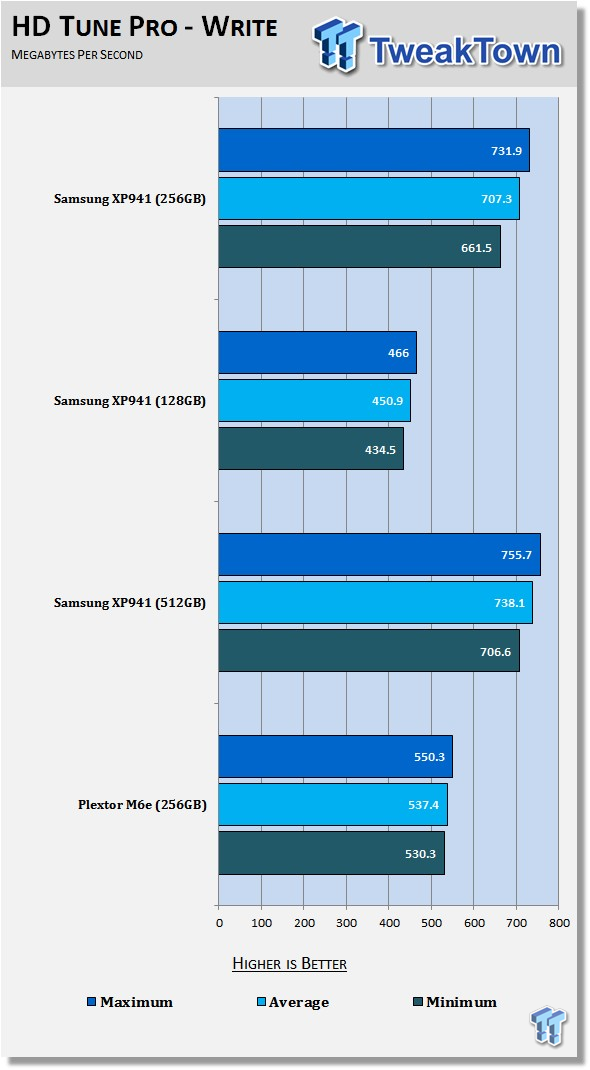
Writing data is where we see the largest separation between the three XP941 capacity sizes. The 512GB model delivered an average sequential write speed of 738 MB/s and the 256GB model averaged 707.3 MB/s in our test using 64KB blocks. The 128GB XP941 only managed to write 450 MB/s in this test. That's on par with the fastest SATA III SSDs on the market today.
HD Tach - Sequential Write Performance after Random Writes
Version and / or Patch Used: 3.0.4.0
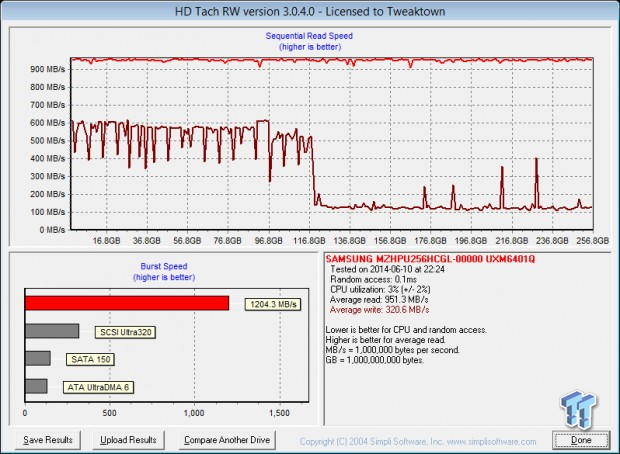
After running the XP941 256GB through a reasonable number of random and sequential write tests to push the drive past FOB state, we ran HD Tach. In this test, we use 128KB sequential data to see the performance roll off with garbage collection working.
The XP941 retains the high read performance we saw in the previous test, but the drive drops to around 500 MB/s sequential write speed. After the drive writes 50% of the capacity all at the same time, the sequential write speed drops down to just over 100 MB/s. It's rare for anyone to write over 100 GB of data in one sitting as fast as possible, but this is what happens when you do.
Benchmarks - Anvil Storage Utilities
Anvil Storage Utilities
Version and / or Patch Used: RC6
So what is Anvil Storage Utilities? First of all, it's a storage benchmark for SSDs and HDDs where you can check and monitor your performance. The Standard Storage Benchmark performs a series of tests; you can run a full test or just the read or the write test, or you can run a single test, i.e. 4k QD16.
Anvil Storage Utilities is not officially available yet, but we've been playing with the beta for several months now. The author, Anvil on several international forums, has been updating the software steadily and is adding new features every couple of months.
We can use Anvil several different ways to show different aspects for each drive. We've chosen to use this software to show the performance of a drive with two different data sets. The first is with compressible data and the second data set is incompressible data. Several users have requested this data in our SSD reviews.
0-Fill Compressible Data
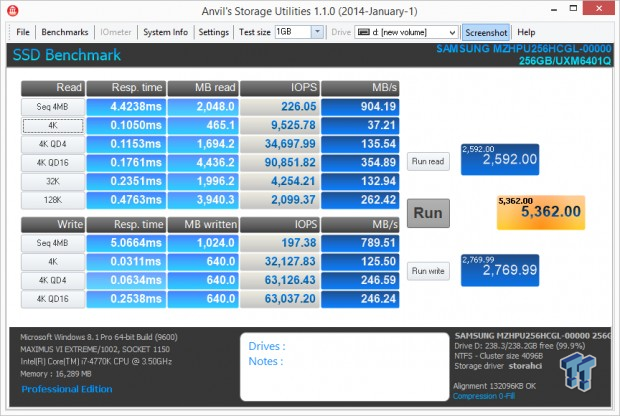
Incompressible Data
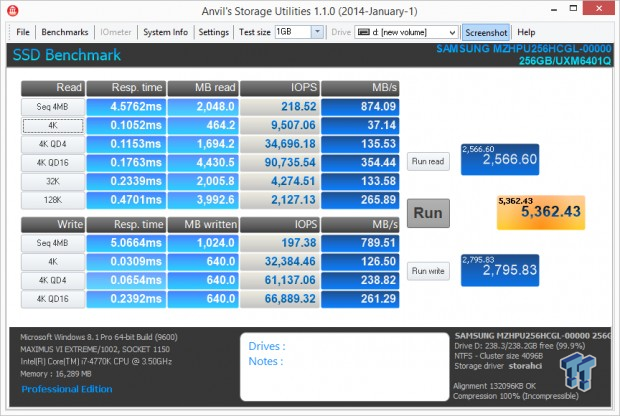
The XP941 doesn't lose performance going from compressible to incompressible data. This means you will not lose write speed when working with audio, video or highly compressed files in RAR and ZIP packages.
Low Queue Depth Read IOPS

Surprisingly, the 256GB model delivered the highest QD1 4K IOPS performance. The difference between all three XP941 drives is quite small and I doubt anyone would actually notice.
High Queue Depth Read IOPS
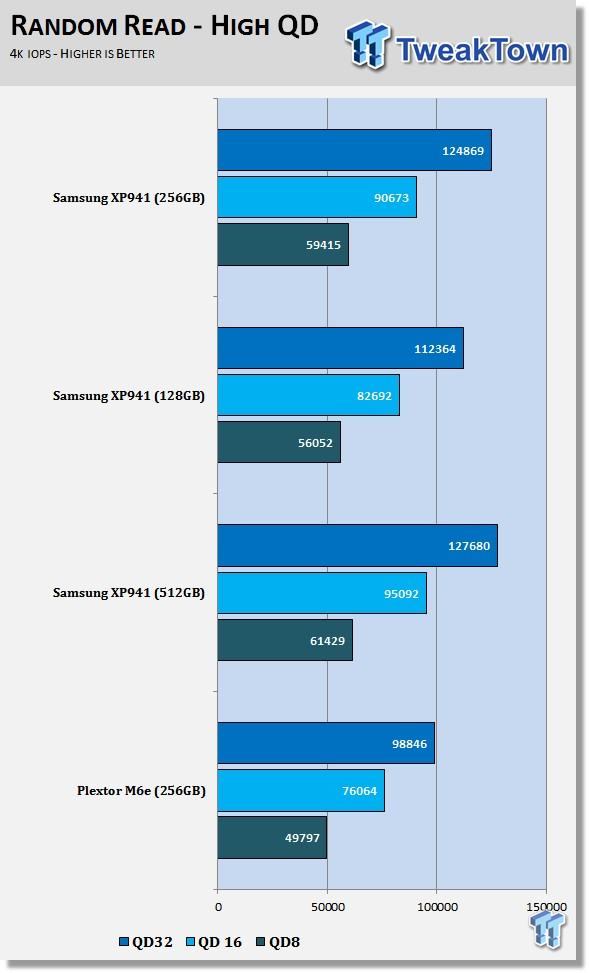
At high queue depths, the three XP941 drives all fall into place by the capacity size. It should be noted that all three XP941 drives manage to outperform the best SATA III drives at high QD. The 256GB model turns in 125K IOPS and the best SATA III drives all stop at roughly 100K.
Low Queue Depth Write IOPS

Random data writes is where we see the largest distinction between the three XP941 drives. All three drives hit roughly 32K random IOPS at QD1. The 128GB model starts to roll off at QD2, delivering just over 41K IOPS, while the two larger models hit 54K and 56K. The 256GB XP941 starts rolling off around 57K at QD4, but the large 512GB model keeps going to 78K at QD4.
High Queue Depth Write IOPS

By the time we get to QD8, most of the XP941 drives have reached or nearly reached the wall. The 256GB model gets up to 64K IOPS at QD8, and then starts to roll back due to latency, as the commands stack up.
Benchmarks - Mixed Read / Write Workloads
In this series of tests, we measure mixed workload performance. We start with 100% read and then add data writes to the mix until we get to 100% writes, in 10% increments. We believe this will be the next major area SSD manufactures will address after performance consistency.
Mixed Workload Bandwidth

At this time, all of the consumer M.2 PCIe drives use the AHCI command set. AHCI is only half-duplex, so the drive can only read or write at one time, but not both at the same time. NVMe SSDs are full duplex and will be able to read and write at the same time.
80% Read / 20% Write Bandwidth

For consumer workloads, we use the 80% read / 20% write point to measure performance. Oddly enough, the 256GB model is a bit slower than the 128GB when we measure at 80/20. We ran both drives through the test three times and got the same results each time.
Random Mixed IO

In this test, we use random data in a 50/50 workload. Here you can see the 256GB XP941 outperforming the 128GB model. Also, until now, the 512GB model was only a little faster than the 256GB XP941, but in this test, the 512GB model is quite a bit faster.
Benchmarks - PCMark Vantage - Drives with Data Testing
For a complete breakdown on the Drives with Data Testing please read this article. You will be able to perform this test at home with the files provided in the article - full instructions are included.
- Brief Methodology
SSDs perform differently when used for a period of time and when data is already present on the drive. The purpose of the Drives with Data testing is to show how a drive performs in these 'dirty' states. SSDs also need time to recover, either with TRIM or onboard garbage collection methods.
Drives with Data Testing - 25%, 50%, 75% Full States and Dirty / Empty Test
Files needed for 60 (64GB), 120 (128GB), 240 (256GB)
60GB Fill - 15GB, 30GB, 45GB
120GB Fill - 30GB, 60GB, 90GB
240GB Fill - 60GB, 120GB, 160GB
Empty but Dirty - a test run just after the fill tests and shows if a drive needs time to recover or if performance is instantly restored.

One of the reasons why I like testing solid state drives so much over other products is because they are complicated parts. In one area, a drive may test faster than another, but in a different situation, it could be slower.
In this test, we put data on the drives and run each through PCMark Vantage. Drives use DRAM to cache the location of the data, kind of like a map. The DRAM is a different size on each capacity size drive. Some companies actually use the same DRAM size on the 512GB and 1TB models. This means the 1TB drives are actually a little slower since the table data that isn't cached in the DRAM has to be read from the slower NAND flash. At the same time, smaller capacity drives have smaller maps, more of the map data is actually held in the DRAM buffer.
With 50% of the drives filled with data, the XP941 128GB puts up a higher performance number in PCMark Vantage's HDD test. The smaller capacity size needs less garbage collection time to shuffle the data around. I suspect if we were to use more than three minutes between each test, the numbers would work out differently.
PCMark 8 Consistency Test
Futuremark PCMark 8 Extended - Consistency Test
Version and / or Patch Used: 2.0.228
Heavy Usage Model:
FutureMark's PCMark 8 allows us to wear the test drive down to a reasonable consumer steady state and then watch the drive recover on its own through garbage collection. To do that, the drive gets pushed down to steady state with random writes and then idle time between a number of tests allows the drive to recover.
Precondition Phase:
1. Write to the drive sequentially through up to the reported capacity with random data.
2. Write the drive through a second time (to take care of overprovisioning).
Degradation Phase:
1. Run writes of random size between 8*512 and 2048*512 bytes on random offsets for 10 minutes.
2. Run performance test (one pass only).
3. Repeat 1 and 2 for 8 times, and on each pass increase the duration of random writes by 5 minutes.
Steady state Phase:
1. Run writes of random size between 8*512 and 2048*512 bytes on random offsets for 50 minutes.
2. Run performance test (one pass only).
3. Repeat 1 and 2 for 5 times.
Recovery Phase:
1. Idle for 5 minutes.
2. Run performance test (one pass only).
3. Repeat 1 and 2 for 5 times.
Storage Bandwidth
PCMark 8's Consistency test provides a ton of data output that we use to judge a drive's performance. Here we see the three states of performance for the select SSDs, light use, consumer steady state and worst case.
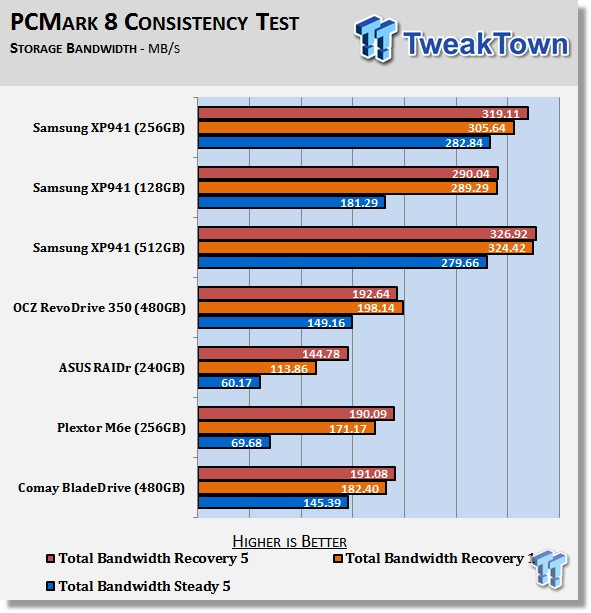
Just as the specifications show, the XP941 drives rate in performance by the capacity size. The 128GB is slower than the 256GB and the 256GB is slower than the 512GB. PCMark 8 is one of the few tests that companies can't fool with optimizations.
Storage Bandwidth All Tests
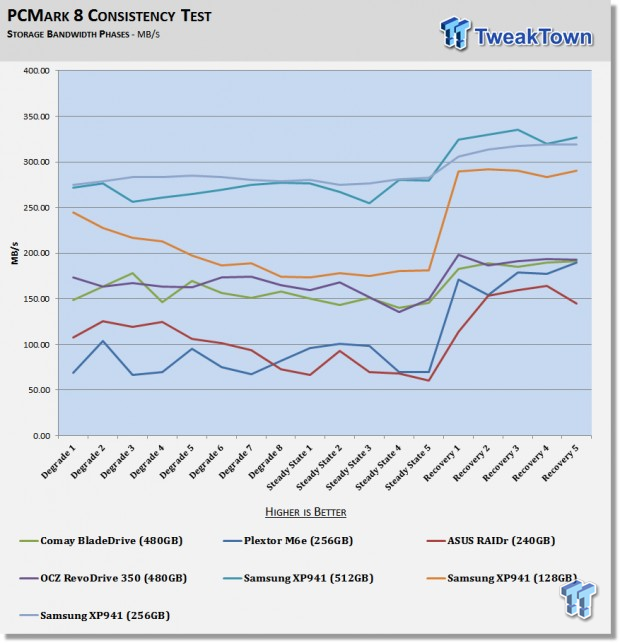
Here we see all of the tests combined on one chart. The XP941 256GB runs very close to the larger 512GB model through most of the tests.
PCMark 8 Consistency Test - Continued
Total Access Time
The access time test measures the total latency across all 18 tests. This is one of, if not the most important test we run at this time for consumer SSDs. When your latency is low your computer feels fast, it's just that simple.
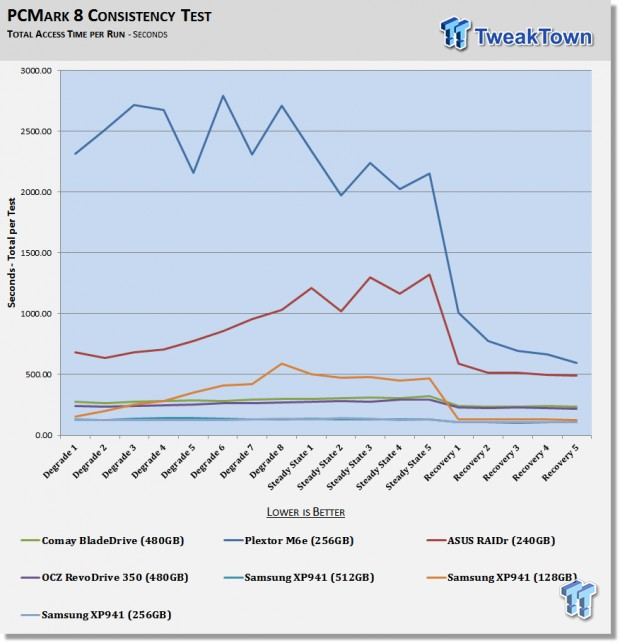
You'll notice we've added a handful of other PCIe drives that use a RAID controller connected to a PCIe interface and more than one SSD. We see here that the native PCIe XP941 drives perform better than the workstation products that do really well in sequential workloads, but not as well in real-world, general computing workloads. The Plextor M6e has the highest latency of all of the drive in this test.
Disk Busy Time
In the final test, we measure the amount of time the drive worked to read and write the data to complete the test. When a drive is active, it uses more power so the faster it can complete the tasks the faster it can fall into a low power state.
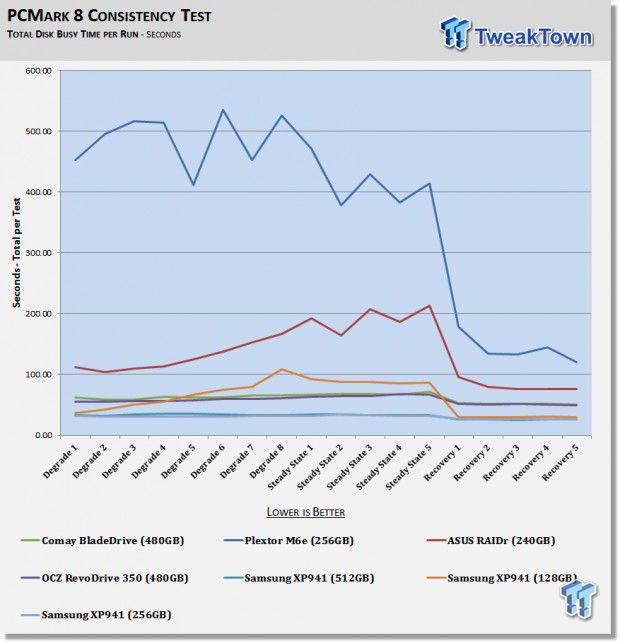
There are only a few notebooks that can use a PCIe M.2 SSD, but we suspect that will change over the next year. Disk Busy Time is one of the tests we use to understand battery life performance changes with different SSDs. The sooner a drive can complete a task, the faster it can return to a lower power state. The XP941 256GB and 512GB complete the tasks very fast and should be able to drop to lower power states quickly.
Final Thoughts

In a perfect world, we would all already have a system with the fastest processor, the fastest and most feature rich chipset and the best solid state drive. In a perfect world, you would have an XP941 512GB. Not everyone has that opportunity and sometimes we have to make compromises. If you aren't quite ready to spend nearly $500 on a XP941 512GB, then the 256GB drive at $249 is a good option for you.
Not long ago, we tested the 128GB XP941 and weren't sold on its balance of performance, capacity, and price. Before that, we tested the 512GB model, and fell off our seat from everything but the price. The XP941 512GB is the fastest client SSD you can put in your computer, so the price can be higher than other SSDs, because it's a premium product. The XP941 256GB is nearly as fast as the larger model, but costs significantly less. The capacity size is cut in half, but for some, 256GB is enough for the operating system and the programs required in a serious workstation. Most of us don't build workstations for work and then throw a bunch of games on it to run every once in a while.
That's really the perfect arrangement for the XP941 256GB. You have enough capacity for your operating system, your serious work programs and space to work data with. Gamers and enthusiasts can still use the 256GB model for a few games, but not an entire Steam collection on the drive. This isn't a limitation exclusive to the XP941, we all prioritize with SSDs, but the performance and user experience make up for the tradeoffs.
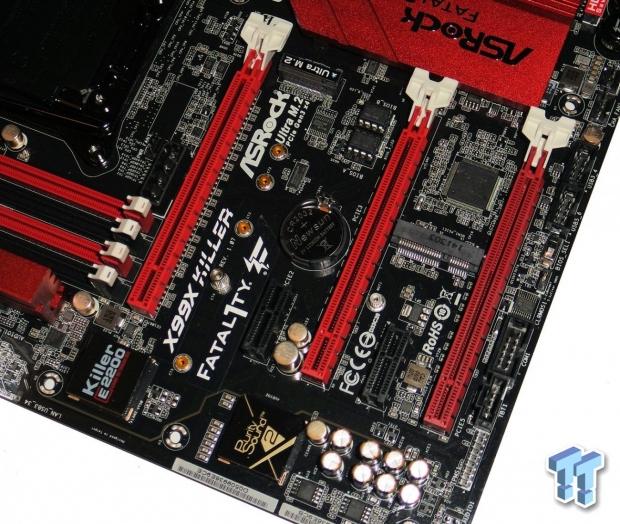
If an X99 system is in your future, then you want to take full advantage of everything the new platform has to offer. The XP941 is the only SSD on the market right now that turns the flash up to x4. If the 512GB model is out of your budget, then the 256GB is your next best option.
We want to thank RamCity for supplying us with the XP941 SSDs.

